Mental health may just be the defining topic of our current media generation. As technology evolves to the point where it can emulate human artistic endeavor, and social media shows us an endless carousel of perfectly-curated windows into the lives of friends and strangers, the messy, inconsistent, inimitable contents of our all-too-mortal minds have never been more relevant.
Red Hook Studios understands this. In fact it was ahead of its time, releasing the original Darkest Dungeon, a game as much about exploring monster-infested tombs as it was about the impact of doing so on the mental wellbeing of your characters, back in 2016. It was hardly the first game to explore such themes, with titles like Dear Esther predating it by multiple generations, but it was one of the first to apply them to a traditional video game structure, in this case dungeon crawling.
Far from dooming the game to arthouse obscurity, these unique mechanics propelled Darkest Dungeon to indie game stardom, with multiple DLC packs, console ports, and awards soon following. And now, seven years later, a sequel has finally arrived. Does Red Hook Studios have the mental wealth to take on mental health again in a new and exciting way? Or is Darkest Dungeon 2 a stab in the dark that doesn’t quite land true? Let’s delve in together and find out.
The tension is mountain
Darkest Dungeon 2 wastes no time in setting the tone. Before you even reach the main menu, you’re given a brief message informing, and warning, you of the game’s high difficulty, and your low chances of success in your first few runs. This warning may elicit a chuckle at first, but it will come to provide a surprising source of reassurance as you slam head-first into the difficulty wall the game represents.
For Darkest Dungeon 2, like its predecessor before it, is a roguelike: a genre notorious for its punishing difficulty and compulsive gameplay loops. You’ll choose a chapter (framed nicely in-universe as a ‘confession’ of a scholar of the occult), build a party of four from your pool of unlocked characters, and set off on your journey. Your goal? To reach the twin-peaked mountain that lies ever-looming in the distance, and uncover the mysteries that swirl within. Like Journey before it, Darkest Dungeon 2 keeps the mountain in your mind by showing you glimpses of it throughout your quest. Every time you rest at an Inn, the rare spots of solace on your rocky road, the camera pans up to show the mountain, reminding you of the grim task still to come.
Put me on the team, coach
Before you can reach your goal, you’ll need to navigate a series of regions, each more wretched and dangerous than the last. It’s here that you’ll get to experience one of Darkest Dungeon 2’s major additions to its predecessor’s formula: the stagecoach. This rickety, horse-drawn carriage brings to mind classics of the gothic horror genre such as Dracula, while simultaneously providing a means of traversing each region at speed. It also shifts the bulk of the action from the interior of dungeons to the open road: a setting which proves just as, if not more, deadly in practice.
This change adds a more dynamic feel to the experience overall, letting you manually steer your stagecoach to collect items on the road, and make decisions at key points along each region’s branching path: paths which, when viewed from above via the in-game map, bear a striking resemblance to a certain Spire you may have Slain in your time. It also lets Red Hook Studios flex their worldbuilding muscles by crafting entire regions as opposed to just additional series’ of dank corridors. There’s a high level of incidental detail visible if you take the time to scope out the roadside, and you’ll find unique locations in each region that grant each their own mechanical and visual identity.
Don’t think that traveling in the relative comfort of a stagecoach will dull the edge of the game’s difficulty, however. Monsters will still find a way to block your path through road barricades and unavoidable locations, and the stagecoach itself brings with it new layers of management, demanding that you keep its wheels and carriage intact lest you break down and fall victim to the creatures of the roadside.
Shadow complex
These new layers sit on top of an already dense cake. Darkest Dungeon 2 is a highly complex game, with a series of gear-like systems tightly meshed together as if within an antique watch, whirring along in a way that seems magical to the untrained eye. The game’s convoluted combat system is one such gear: while it appears to be typical turn-based fare on the surface, the literal glossary of buff and debuff icons you’ll need to learn before you can properly engage with it is a daunting prospect at first. This complexity isn’t back-loaded either: from the very first battle you fight you’ll encounter enemies that can inflict a range of debuffs on your party, and you’ll need to work out how best to manage those while chipping away at their sizable health pools.
And while you’re fighting for your life, keeping a close eye on your party’s health, another gear is spinning in subtle synchronicity: the stress system. This was the original game’s big innovation, a means of measuring the mental health of your party members in addition to the physical, and it makes a welcome return here. Stress levels rise and fall based on various factors, with decisive moments being triggered once a character’s stress level reaches ten. At this point, characters will either remain resolute and rally themselves for another round, or have a meltdown, taking serious damage in the process. Capping out your stress is a risk you’ll want to avoid more often than not, necessitating the use of Skills and items to manage your party’s stress levels throughout your run.
That sounds like plenty to be getting on with, but Darkest Dungeon 2 is a game that just keeps on giving, building on top of the stress system with the shiny new affinity mechanic. This is a system that governs relationships between the four members of your party, with each pair gaining or losing points at key moments, including choices made at world locations and decisions made in combat. After resting at an Inn, relationships can be formed based on each pair’s affinity value, some positive and some negative.
These relationships can have a profound impact on combat, with certain Skills getting better or worse, and certain characters acting independently of your orders to help or hinder their relationship partner. While these relationships can be managed to an extent, for the most part this feels like an emergent system: intended to create interesting scenarios you’ll have to deal with, rather than be mastered and exploited for your own gain.
All the world’s a stage
It’s when you’re in the middle of a drawn-out battle, and the affinity system is firing on all cylinders, that Darkest Dungeon 2 really comes alive, transforming a standard turn-based battle into a human drama full of twists, turns, and character moments. Choosing to heal one weakened character over another prompts anger from the latter, landing the killing blow on a tricky monster inspires jealousy among the other damage-dealers, and everything is communicated via quick-flash speech bubbles, giving insight into the situation and showing you its mechanical impact as well.
It’s a joy to see the relationships established at each Inn manifest in real time during these encounters, but you’ll also see them on the road, with characters often exchanging comments and remarks as you trundle not-so-merrily along. The stress system plays directly into this, with meltdowns having a hugely detrimental effect on every relationship a character has, giving you another reason to avoid them at all costs. In this sense, the affinity system is the perfect extension of Darkest Dungeon’s existing mental health mechanics, further humanizing your brooding band of brawlers in new, mechanically interesting ways.
The game really does feel like one of the more nuanced takes on mental health the industry has seen yet, which supports its Lovecraftian horror stylings perfectly. Many titles have tried to represent Lovecraft’s menagerie of unfathomable cosmic nightmares over time, with this year’s Dredge doing an admirable job in a much less combative setting, but few have succeeded, due primarily to the high-concept nature of such creatures and the way in which they interact on the mental axis rather than the physical. Darkest Dungeon 2’s mental health systems provide the perfect foundation for such interactions, which makes the cosmic horrors you’ll face on the road to the mountain feel authentic in a way they rarely do elsewhere. They’re still much more tangible than Lovecraft’s originals, and are still vulnerable to earthly weaponry and physical attacks, but such concessions are welcome in a game that is already more than capable of crushing you at a moment’s notice.
Mind to the grindstone
We mentioned difficulty above, but it really does bear repeating in this case: Darkest Dungeon 2 is an incredibly difficult game. Battles are long and hard, with even basic enemies capable of claiming their pound of flesh if you let your guard down for an instant. Later foes will disrupt your party’s formation, weaken your attacks, and buff themselves, leaving you frantically trying to unpick the knot they’ve tied around your neck on each turn. It can be exhilarating, but it can also be demoralizing, with early losses providing little in the way of learning opportunities or permanent progress.
Such progress comes in the form of new character and item unlocks, earned by exchanging candles at the Altar of Hope, a kind of ethereal ticket redemption desk found at the end of each run. Crucially, these are always additional options rather than significant upgrades: you won’t find an easy-win ‘+20% damage’ upgrade here. You will, however, open up your options, letting you react to more scenarios and perform slightly better next time around. This feels like the right approach, giving you small goals to work towards throughout without just handing you a win at a certain point, as tempting as such an inclusion would be.
There’s little positive character progression during runs, either. Aside from upgrading Skills via Mastery Points, and collecting Trinkets for minor stat bonuses, your party remains the same throughout. In fact, there’s a good chance they’ll be much weaker by the end of your run than when they started, owing to the encroaching impact of the stress and affinity systems. This feels wonderfully authentic, bringing to mind humorous before and after shot comparisons of expedition teams on real-world journeys, but it also brings an element of fairness that most roguelikes lack. Right from the start, you’ll be equipped to deal with the journey ahead: the only obstacle in your path is a lack of systemic knowledge.
The fire fades
Such knowledge proves hard-won, earned in countless bitter fights and catastrophic failures, as your party relationships break down, your stagecoach flame flickers, and the creatures of the night close in. You’ll curse every time a good run spirals into disaster on the whims of unfortunate circumstance, but you’ll come away with a lesson learned for next time, and an action you can take to prevent it from happening again. If you follow the direction of that pre-main menu warning, if you take heart and don’t relent, you’ll be able to reach the mountain, and confront the evil that awaits at the heart of Darkest Dungeon 2. Make sure you’re prepared beforehand, however: the cost of doing so, both in-game and out, may just be higher than you know.

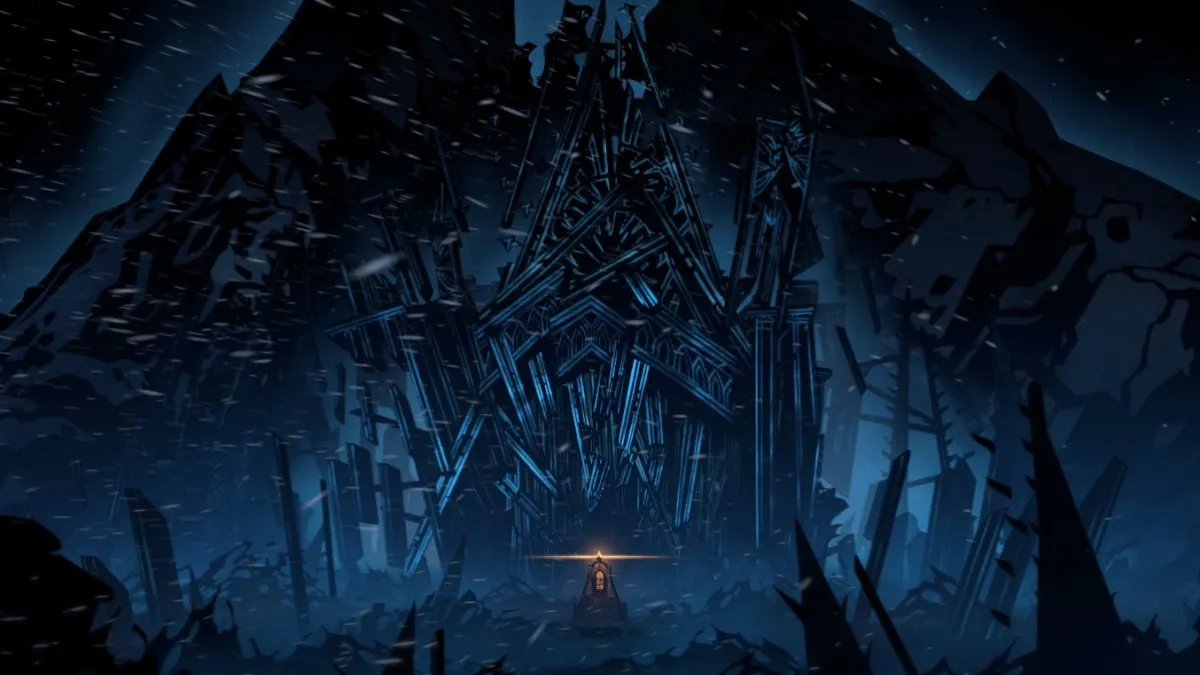
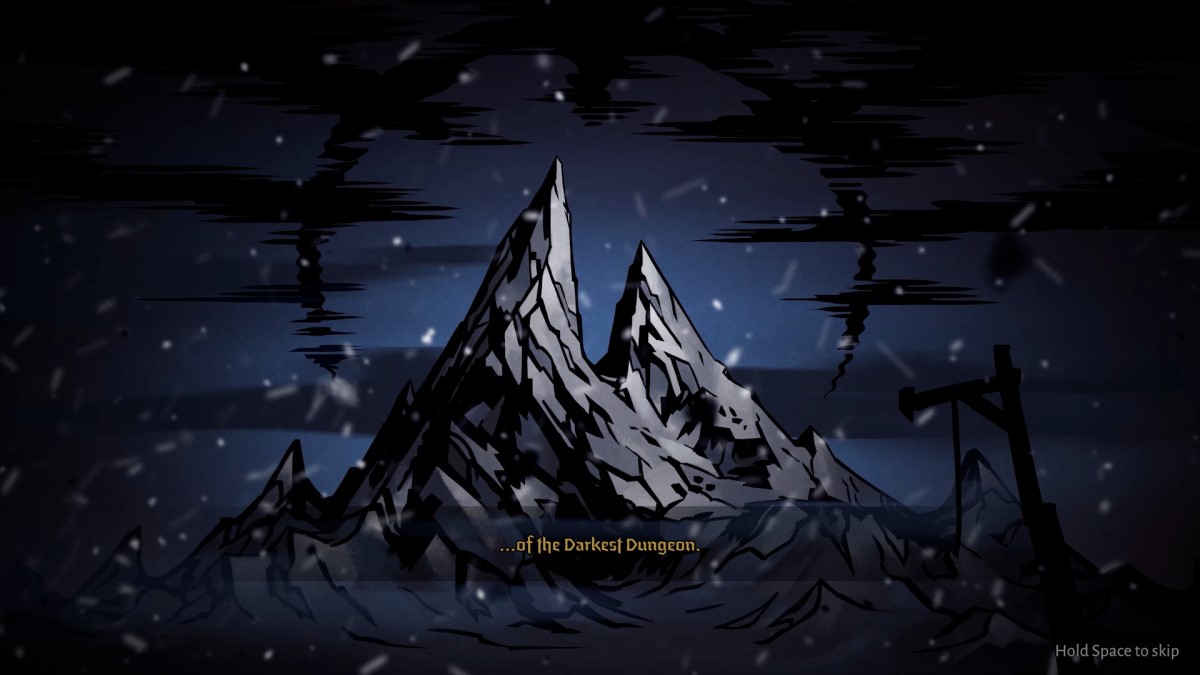
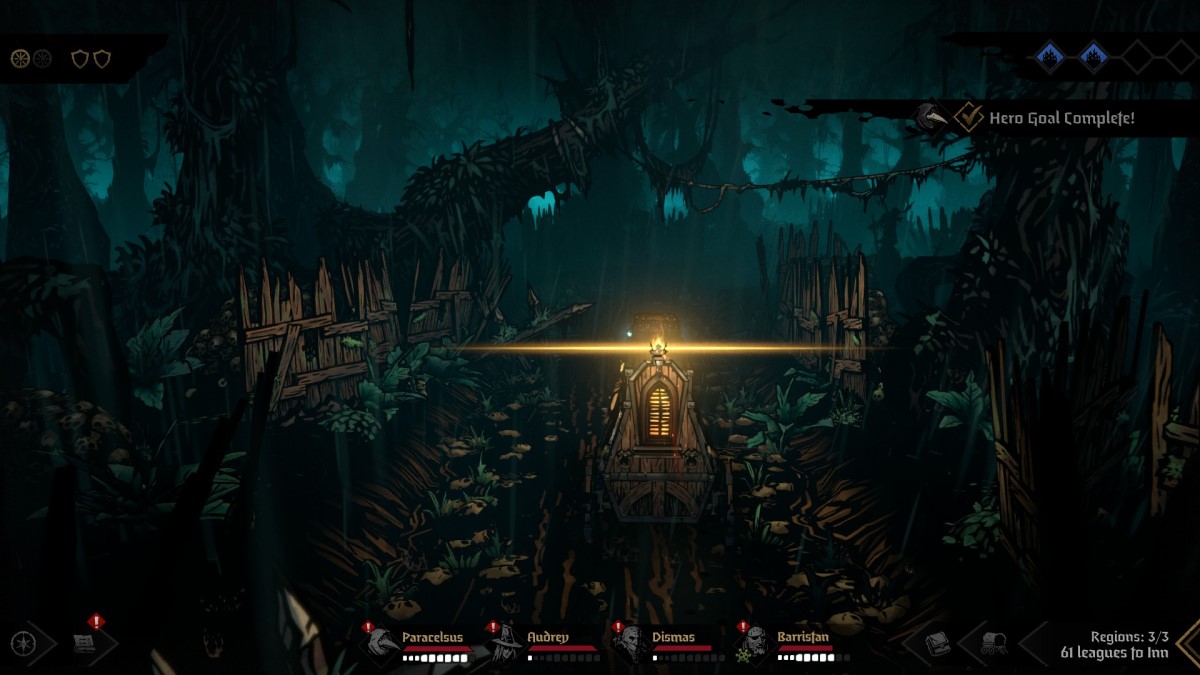
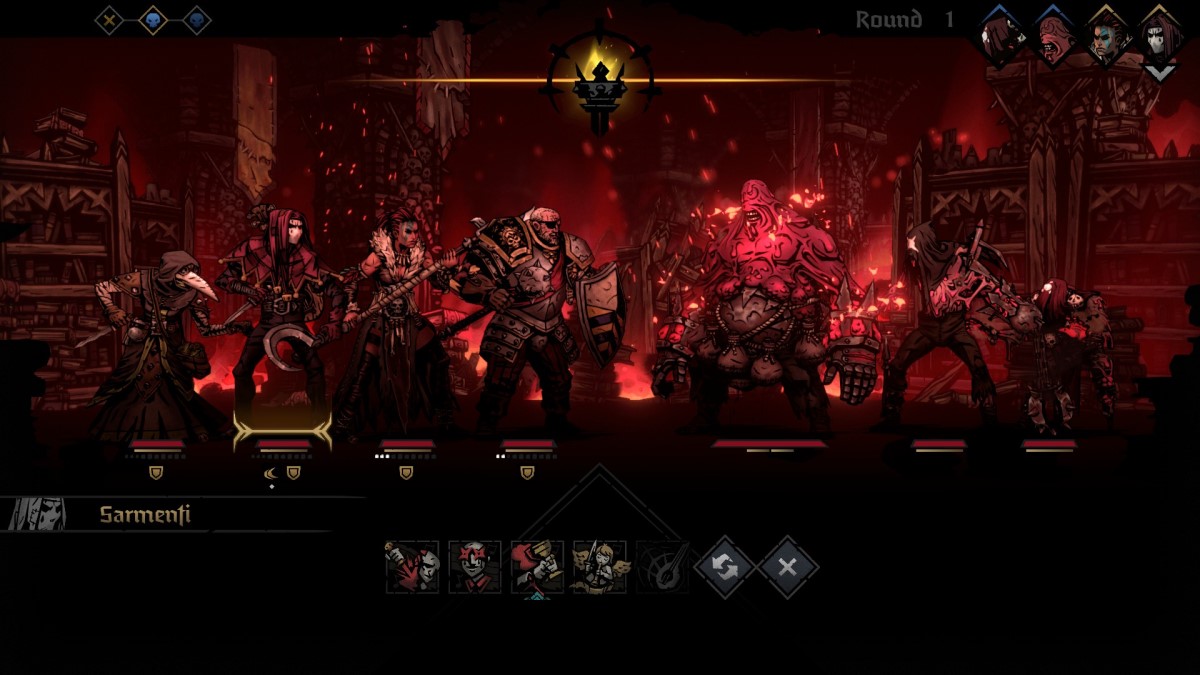
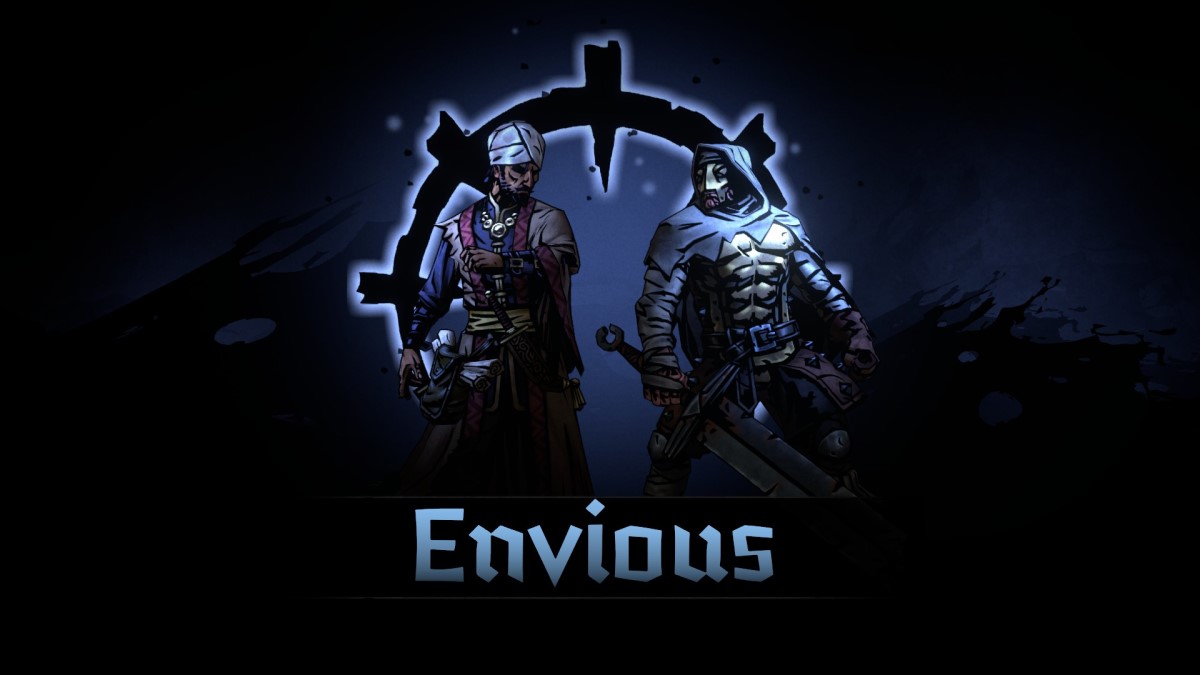
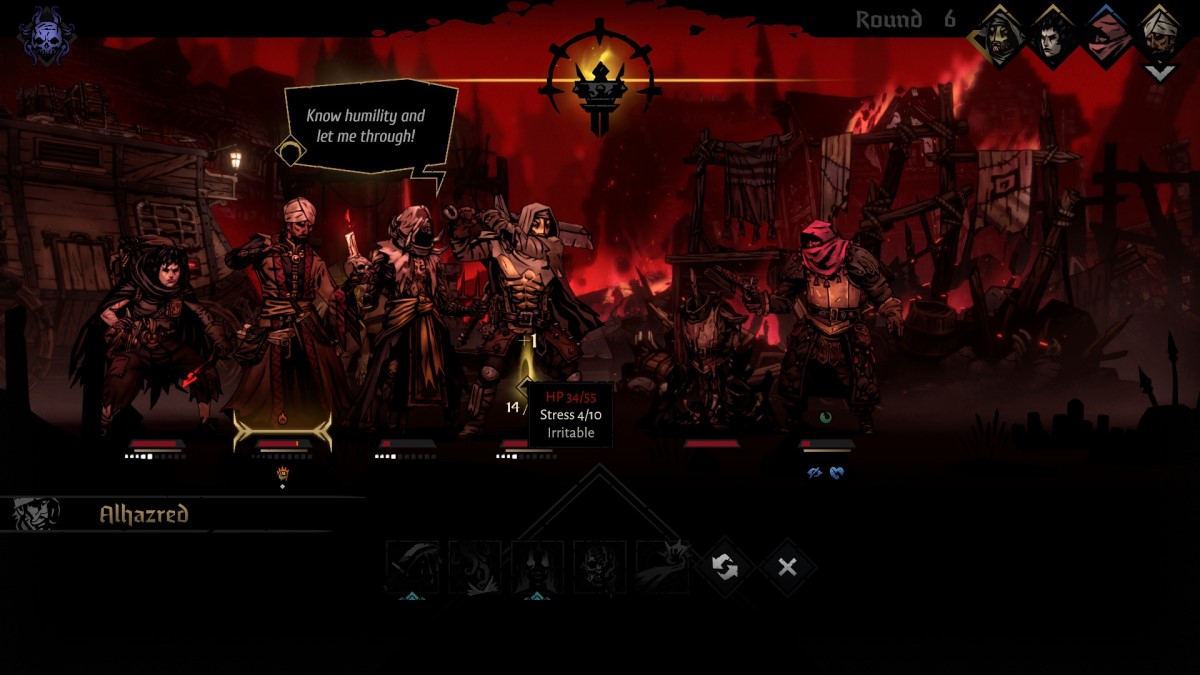
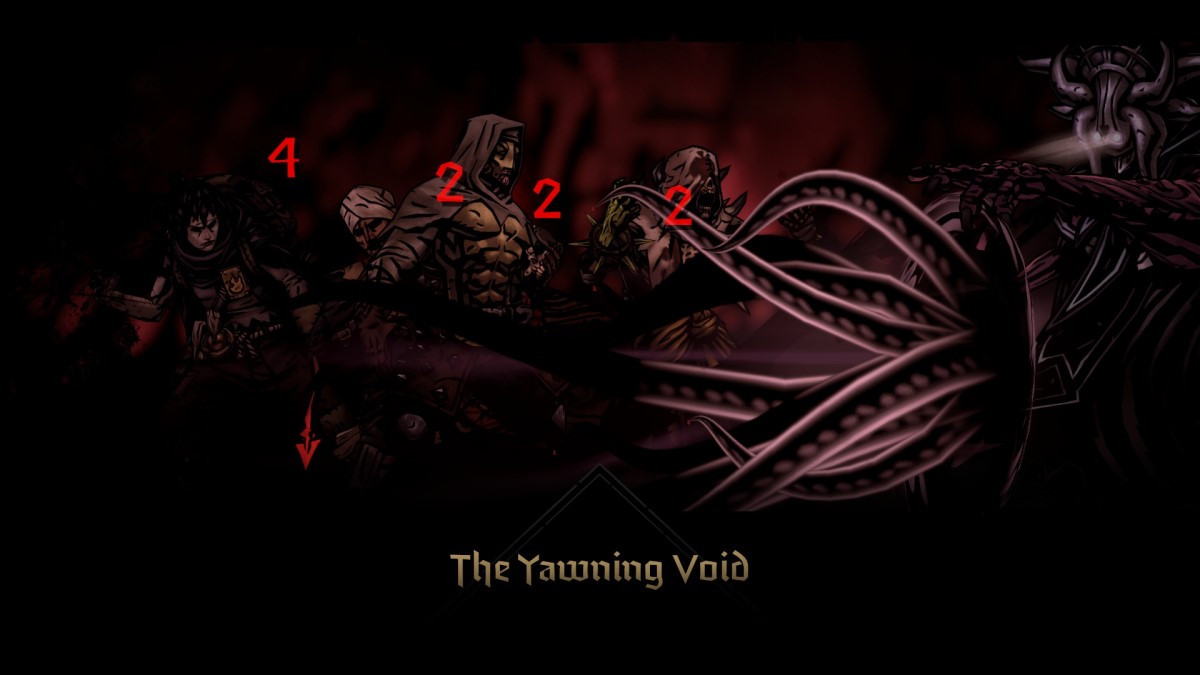
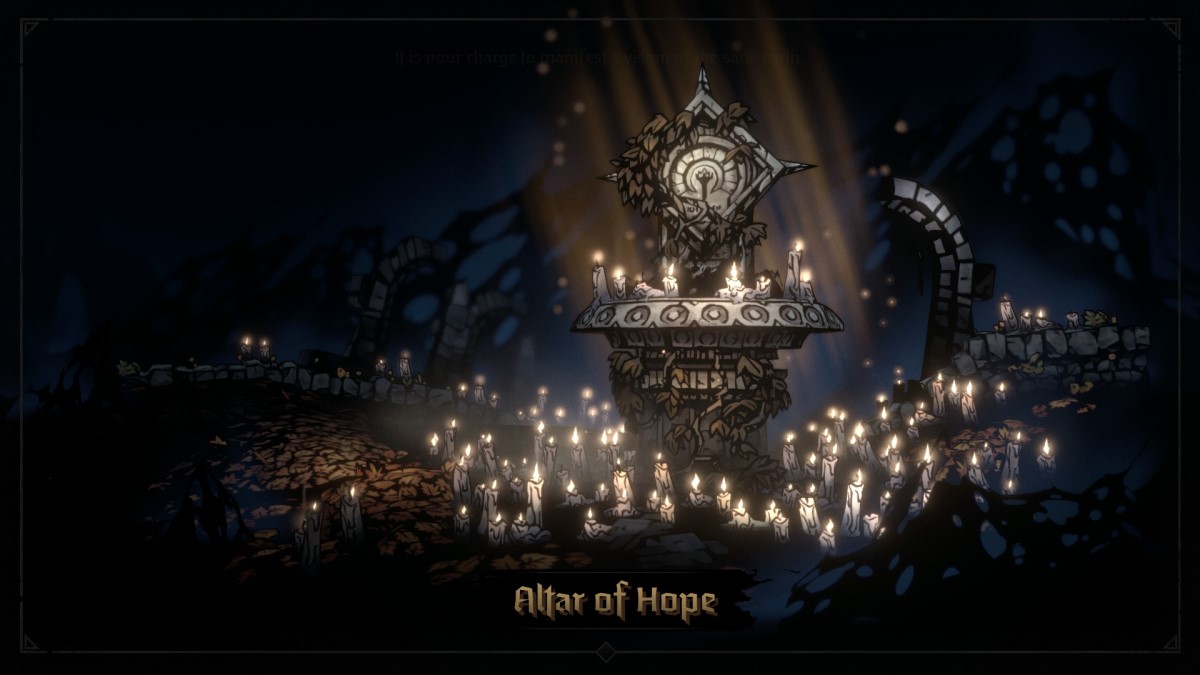
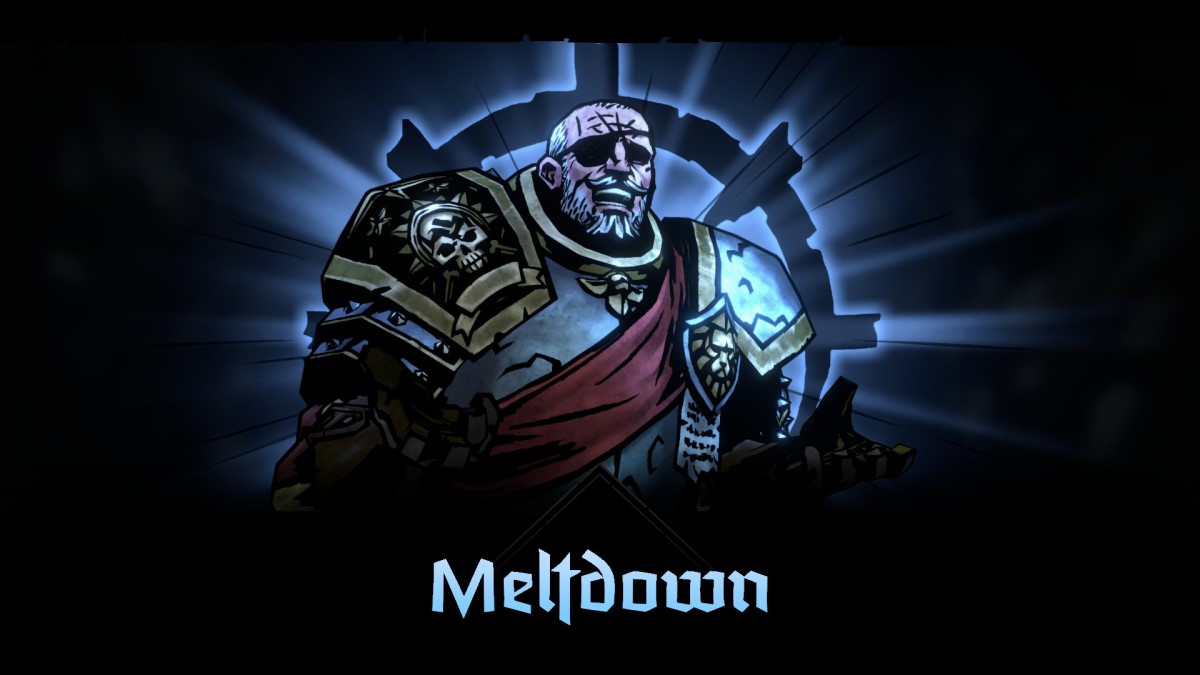




Published: May 11, 2023 08:46 am